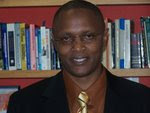Society takes alphabet for granted
Ndirangu Wachanga
Issue date: 3/29/06 - NT Daily
It is the Pennsylvanian-born Otto Frederick Ege, that legendary early book collector and art instructor, who wrote in 1923 that there is a whole volume of human history in back of every one of the 26 alphabetic characters with which we write our thoughts. That we take for granted the infinite nature of language and its confinement within a mere 26 letters of the alphabet is astounding. It is uncommon to think about alphabets in our common usage of these "art forms." History of letter forms and how they came about, and even the history of ideas of how alphabets came about continue to confound scholars in all fields of study.
Although hieroglyphics and cuneiform as writing systems existed in ancient Middle East as early as 3000 B.C., it is through trade activities that the alphabet emerged almost 1000 years later. What is even more absorbing is the fact that there is a seemingly incredible happenstance between the location where the alphabet emerged and the Biblical story of Moses and the Decalogue.
Careful study of the evolution of the alphabets leads to an intriguing understanding of how different it is to represent things, speech and thought.
In our contemporary society, knowledge of the alphabets defines our literacy. Literacy, arguably, determines society's level of development. Interestingly, Plato argues that letters (writing) have the ability to foster forgetfulness by creating reliance and dependence on external written characters and not on our memory.
This has been countered by the one of the leading theorists, and renowned historian of typography in the United States, Dr. Johanna Drucker, who will be giving a lecture today at the University Union on "Knowledge Modeling and Metadata: Digital Environment for Critical Analysis."
According to Drucker, by writing, one has the capability for memory and transmission. "If you have memory and transmission then oral culture can do something else," she argues.
Drucker, the Robertson professor of media studies and the director of interdisciplinary program in media study at the University of Virginia, is internationally known as a book artist and as an experimental, visual poet.
Her lecture on digital information design projects is sure to engage students and faculty from a variety of disciplines – art, literature, journalism, computer science, poetry and library and information science.
If you ever wondered with the German philologist if language is the Rubicon that divides man from the beasts and no animal will ever cross it, then attending Drucker's presentation will surely provide another equally thought-provoking perspective about the 26 art forms we use every day, yet never think about.
Ndirangu Wachanga is a journalism graduate student from Nairobi, Kenya. He can be contacted at gnimzeewachanga29@yahoo.com.

No comments:
Post a Comment